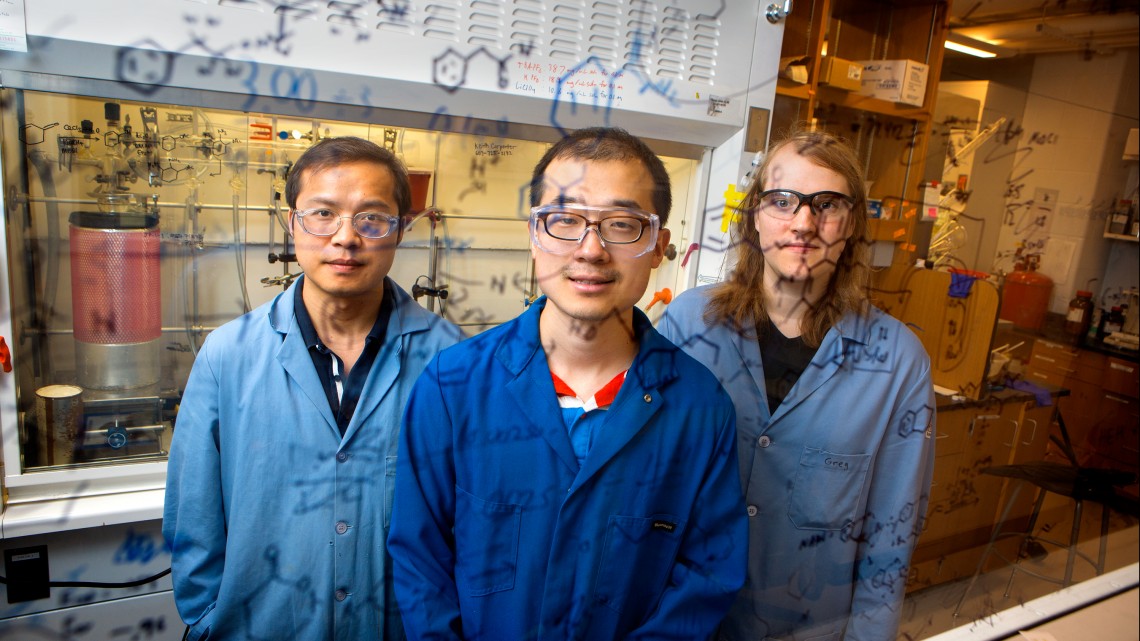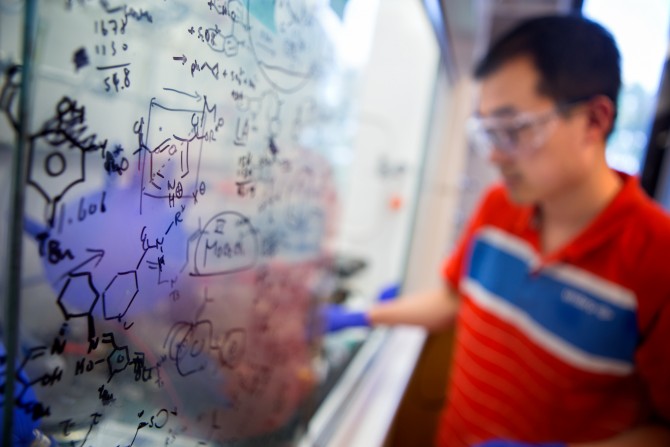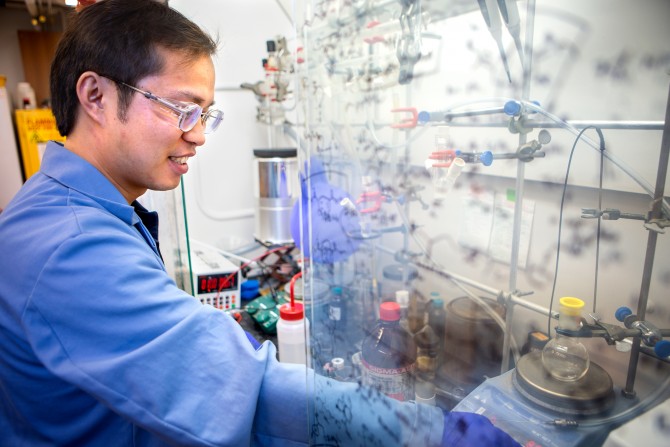
Niankai Fu, left, Song Lin and Greg Sauer take a short break in the laboratory from electrochemical research.
Chemists use electricity to amp up drug manufacturing
By Blaine Friedlander
Give your medicine a jolt. By using a technique that combines electricity and chemistry, future pharmaceuticals – including many of the top prescribed medications in the United States – soon may be easily scaled up to be manufactured in a more sustainable way. This new Cornell research appears in Science Aug. 11.
Currently, making pharmaceuticals involves creating complex organic molecules that require several chemical steps and intense energy. The process also spawns copious amounts of environmentally harmful – and usually toxic – waste.
At the heart of many popular pharmaceuticals are vicinal diamines, which contain carbon-nitrogen chemical bonds, a bioactive foundation for the medicine. According to Song Lin, assistant professor of chemistry, many widely consumed therapeutic agents have these diamines, including prescription-strength flu medicines, penicillin and some anti-cancer drugs.
To synthesize diamines, chemists have to employ oxidation and reduction reactions that reconfigure molecules, atoms and ions. It’s an energy-intensive and chemically wasteful process. Despite technical advances, a broadly applicable approach to diamine synthesis remained elusive, Lin said.
But the laborious tasks and chemical squander can go away. Lin and his team have developed a technique that creates vicinal diamines more easily and without the toxic waste. The process uses electricity and chemistry – electrochemistry – and then employs Earth-abundant manganese.
“The current process generates a lot of waste product to make this chemical bond. When you can create a product electrosynthetically, rather than chemically, it is much more straightforward and sustainable,” Lin said.
This process has not been used extensively, as electrochemistry and organic synthesis are not taught in colleges in an integrated way. The field is at the frontier, explained Lin. “Today, however, people generally are conducting interdisciplinary research,” he said. “Scientists realize that this is a powerful way to combine things in traditionally disparate fields.”
The technique also addresses chemists’ worry about the environment. “We are aiming to reduce pollution and to help our field become more sustainable, so we engage new technology for things like synthesizing pharmaceuticals,” said Lin. “We are focusing on how to get there.”
In addition to Lin as a senior author, “Metal-catalyzed Electrochemical Diazidation of Alkenes” was written by lead author postdoctoral researcher Niankai Fu, graduate student Greg Sauer, Ambarneil Saha ’18 and Aaron Loo ’19. Cornell laboratory startup money funded this research, and the National Science Foundation provides funding to Sauer.
Lin, along with Hector Abruña, the Emile M. Chamot Professor of Chemistry, and Abe Stroock, the William C. Hooey Director and the Gordon L. Dibble ’50 Professor of Chemical and Biomolecular Engineering, were awarded a 2017 Academic Venture Fund grant at Cornell’s Atkinson Center for a Sustainable Future, for their research earlier this summer in creating cleaner, greener medicines.
Media Contact
Get Cornell news delivered right to your inbox.
Subscribe
